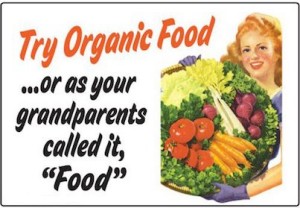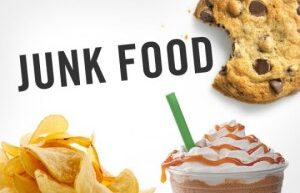
In the perfect world, we’d all be able to buy EVERYTHING organic ALL THE TIME.
Or really, in the perfect world, there wouldn’t be any need for “organic” — food would be food and that would be that.
But the world is not perfect. And as much as many of us wish we could buy all of the food on our grocery list organically-grown, we unfortunately simply cannot. For this reason, it’s very important to know which foods are the most important to buy organic so you can prioritize.
Each year the Environmental Working Group releases its annual dirty dozen list — a list of foods that you should always, whenever possible, buy organic. The group analyzes Department of Agriculture data about pesticide residue and ranks foods based on how much or little pesticide residue they have. The group has estimated that individuals can reduce their exposure by 80% if they switch to organic when buying those 12 foods.
Here is this year’s dirty dozen along with 8 additional foods that we’d recommend always buying organic due to their track record and other research:
1. Apples
Apples consistently rank near the top of the annual dirty dozen list. More than 45 different pesticides have been detected on apples, because fungus and insect threats prompt farmers to spray various chemicals on their orchards. Not surprisingly, pesticide residue is also found in apple juice and apple sauce, making all apple products smart foods to buy organic.
2. Strawberries
Strawberries are always on the list of dirty dozen foods, in part because fungus prompts farmers to spray, and pesticide residue remains on berries sold at market. More than 40 different pesticides have been found on strawberries, though fewer are found on frozen strawberries.
3. Grapes
Another perennial entrant on the dirty dozen list, imported grapes can have more than 50 pesticides. Raisins, not surprisingly, also have high pesticide residue tests.
4. Celery
Another perennial food on the dirty dozen list is celery. USDA tests have found more than 60 different pesticides on celery.
5. Peaches
Another tree fruit that always makes the dirty dozen list: peaches. More than 60 pesticides have been found on them.
6. Spinach
Leading the leafy green pesticide residue category is spinach, with more than 50 different pesticides. (While frozen spinach has nearly as many, canned has had fewer detected pesticides.)
7-8. Sweet Bell Peppers and Hot Peppers
Another food that usually makes the dirty dozen list because it tends to have high pesticide are peppers, in all of its colorful varieties. Nearly 50 different pesticides have been detected on peppers.
9. Nectarines (Imported)
Nectarines, at least imported ones, are among the most highly contaminated tree fruits. Domestic nectarines don’t test with as much pesticide residue, but overall 33 pesticides have been detected on nectarines.
10. Cucumbers
Cucumbers might be laced with as many as 86 different pesticides that remain on the vegetable’s skin when it’s time for salad-making. Peeling the skin off may reduce your chances of ingesting some of them.
11. Cherry Tomatoes
There really is no substitute for a good, fresh tomato. If you can’t grow your own, buy from a farmers’ market or CSA, then try the organic produce section of your local grocery.
12. Potatoes
America’s favorite vegetable is the potato. Unfortunately, more than 30 pesticides have been detected on potatoes in USDA testing. Sweet potatoes offer a delicious alternative with less chance of pesticide residue.
13. Kale
Traditionally kale is known as a hardier vegetable that rarely suffers from pests and disease, but it was found to have high amounts of pesticide residue when tested in each of the past several years. Luckily kale is a staple of the organic farm marke scene. If you want kale, you can find it organic.
14. Collard Greens
Put on par with kale on the annual dirty dozen list, collard greens tests have revealed more than 45 pesticides. Alternatives include Brussels sprouts, dandelion greens, and cabbage.
15. Zucchini
The humble summer squash is often laced with chemical pesticides.
16. Lettuce
Joining spinach in the leafy greens category, lettuce often makes the list of dirty dozen foods with the most pesticides. More than 50 pesticides have been identified on lettuce.
17. Blueberries
Blueberries usually make the dirty dozen list, since more than 50 pesticides have been detected as residue on them. Frozen blueberries have proved somewhat less contaminated. Unfortunately, obvious alternatives like cranberries and cherries, while they may not make the dirty dozen list this year, are often contaminated themselves.
18. Fatty Meats
While it doesn’t make the list of dirty dozen foods, meat makes our list. There are generally no pesticides found in beef muscle, but the fat is another story. Fewer than a dozen pesticides have been detected in beef fat, but among them are long-lived chemicals that accumulate in human fats just as they do in beef cattle. The same pattern holds for other meats, with pork fat and chicken thighs tallying the most pesticide residue, while lean meat comes up clean.
19. Milk
Pesticides and other man-made chemicals have been found in human breast milk, so it should come as no surprise that they have been found in dairy products, too. Four different pesticides have been identified in milk.
20. Wine
Similarly to coffee, there’s no watchdog reporting on pesticides found in wine, but grapes are among the crops that are typically heavily doused with pesticides to ward off fungus and bugs. Fortunately, there are more and more fine organic wines on the market. Many will be labeled “made with organic grapes,” rather than “organic wine” because winemakers add sulfites as a preservative to allow for long-distance shipping.






Add comment